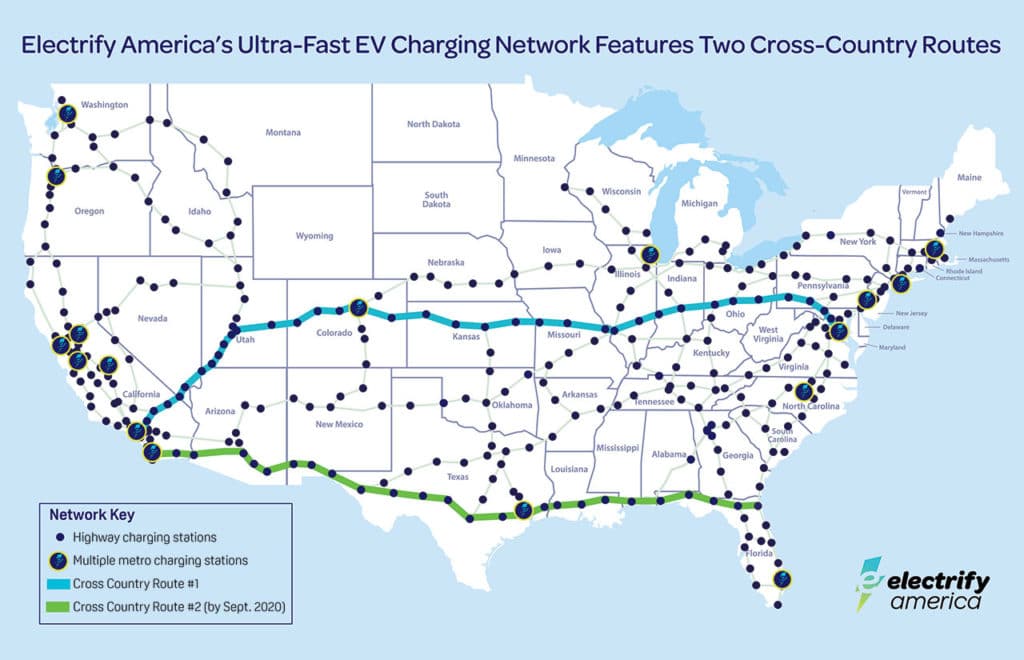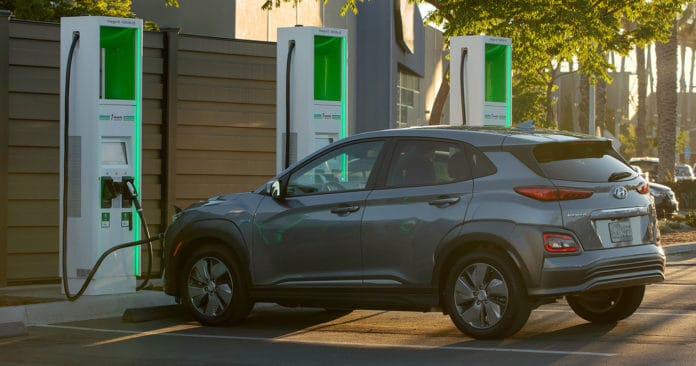A huge factor in making electric vehicles is the problem of getting stuck on the road with an empty battery. A Volkswagen subsidiary called Electrify America intends to deprive U.S. car owners of such concerns and worries.
The company announced the completion of its cross-country route, which allows electric vehicle (EV) drivers to travel from coast to coast using the largest open DC fast-charging network in the United States. It is the first of two cross-country routes and spans 11 states and over 2,700 miles (4,345 km) to take drivers from Los Angeles to the nation’s capital Washington D.C.
With charging stations located approximately every 70 miles (112 km), drivers of electric vehicles in the United States will be able to get around the country much more easily. Unlike Tesla Supercharger stations, these are indeed intended for all-electric vehicles. With the charging speeds up to 350kW, the high-powered chargers get EV drivers fueled up and back on their way quicker than ever.

Credits: Electrify America
“Electrify America’s primary goal has always been to advance electric vehicle adoption in the U.S., and that starts by instilling feelings of confidence and freedom in consumers when it comes to EV ownership,” said Anthony Lambkin, director of operations at Electrify America. “The completion of our first cross-country route is a significant step towards that goal – by making long-distance travel in an EV a reality, we hope to encourage more consumers to make the switch to electric.“
Electrify America intends to invest about $2 billion over the next ten years in the creation of infrastructure for zero-emission vehicles in the United States. By the end of next year, the company plans to build approximately 800 total charging stations in the country with about 3,500 DC fast chargers. The company promises to complete the second route from Jacksonville to San Diego by the end of this summer.
To date, Electrify America has more than 435 operational charging stations with over 1,900 DC fast chargers, and another 100+ sites in development. However, it should be noted that some stations have experienced malfunction related to payment by bank card, causing drivers to pay via the group’s application. A “plug and charge” system, allowing the vehicle to be identified as soon as it is connected to the station and to pay automatically, is under development.
